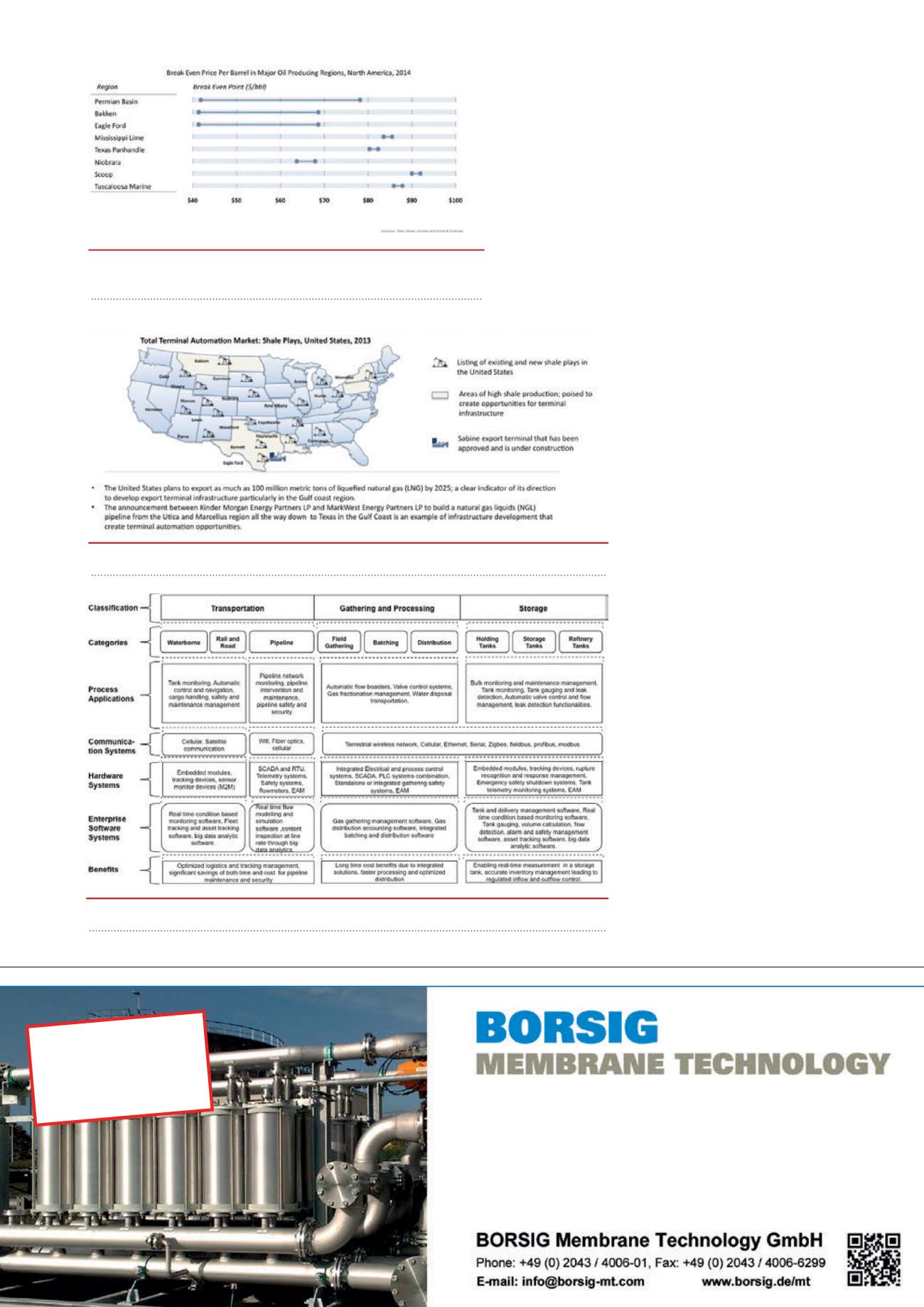
modernisation. Unlike other segments in the
region’s oil and gas value chain, which saw growth
in excess of 9.0%, terminal automation has lagged
due to end user inability to clearly see the
business case for automation. One of the key
trends driving a tectonic shift in implementation
cases is the integration of terminal controls with
business applications. The need for operational
excellence, especially in the face of declining
skilled workforce availability, is expected to drive
modernisation related investments in the market.
The future of the terminal
automation market can be
assessed through several unique
perspectives such as CEO’s,
market, competitive and best
practices.
CEO’s
perspective
Frost & Sullivan has devised a
holistic model that critically
looks at seven unique
perspectives instrumental to
reduced performance
variability.
Market
perspective
Shale gas investments
and production
Although, oil prices have taken
a dip below US$70 /bbl (as of
8 December 2014), the US is not
expected to stop ongoing
production. The breakeven
price for US shale production
ranges from US$50 to over
US$100, as shown in Figure 1.
Hence, even at current prices,
there are promising margins for
cost effective production.
Poor connectivity between
existing shale plays and
StocExpo Europe
Tank World Expo
ACHEMA 2015
Tank Storage Asia
Emission Control
Product Recovery
BORSIG
Vapour Recovery Unit
BORSIG
Ethylene Recovery Unit
BORSIG
Carbon Retrofit Unit
BORSIG
Propylene Recovery Unit
BORSIG
Vent Recovery Unit
BORSIG
Nitrogen Recovery Unit
BORSIG
Hydrocarbon Recovery Unit
BORSIG
Organic Solvent Nanofiltration
Gas Separation
Engineering/Services
Figure 1.
North American oil production. Break even
point per region.
Figure 2.
Opportunity mapping, the US.
Figure 3.
Midstream automation value chain mapping.


